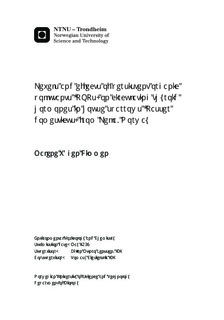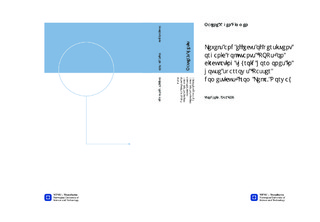| dc.description.abstract | Persistent organic pollutants (POPs) have been reported to disrupt vertebrate endocrine systems in numerous wildlife, semi-field and laboratory studies, and thyroid homeostasis is among the systems reported to be susceptible for such perturbation. Thyroid hormones are important in a vast range of physiological processes, and a disruption of thyroid homeostasis might thus cause detrimental effects. Toxic effects exerted by POPs on the thyroid system has been reported in mammals and in birds at high trophic levels, but the knowledge of POPs toxicity in passerines is limited. The passerine species house sparrow (Passer domesticus) has to my knowledge never been investigated for thyroid disruption previous to the present study. The house sparrow has experienced a severe population decrease in Northern Europe since mid-1980s, and the reason for the decline is not completely elucidated. Increased knowledge regarding levels and toxic effects of POPs in house sparrows might contribute to further elucidation of the problem.The aim of the present study was to investigate potential effects of POPs exposure on the thyroid system, herein represented by circulating free fractions of 3,3 ,5-triiodothyronine (FT3) and thyroxine (FT4), in house sparrows from Norway. An additional aim was to contribute to the existing documentation of POPs levels in passerines, specifically hepatic levels. The multivariate statistical analyses principal component analysis (PCA) and orthogonal projections to latent structures (O-PLS) were used to model the complexity of variables affecting FT3 and FT4 levels in the birds, including both biometric variables and contaminant levels as predictors. Additionally, bivariate correlations between contaminants and thyroid hormones were investigated with Spearman s rank correlation test. The study population was located on an agricultural island in Northern Norway, and sampling was conducted in February 2013. Significant correlations between single POPs and thyroid hormones are reported in the present study. Although statistical correlations do not represent cause-effect relationship, these findings add further weight of evidence to the hypothesis of avian thyroid disruption caused by contaminant exposure in wildlife. The level of contamination in the investigated sparrows was in general low, but a few individuals had highly elevated levels of some polychlorinated biphenyl (PCB) congeners compared to the mean. PCBs and organochlorine pesticides (OCPs) were found at higher concentrations than polybrominated diphenyl ethers (PBDEs) in the sparrows, and the OCPs varied significantly between sexes. The level of one contaminant seemed to vary with age (PCB-52), and levels of three PBDE congeners (BDE-47, -99 and -100) varied significantly according to which farm the investigated birds was captured. | nb_NO |

